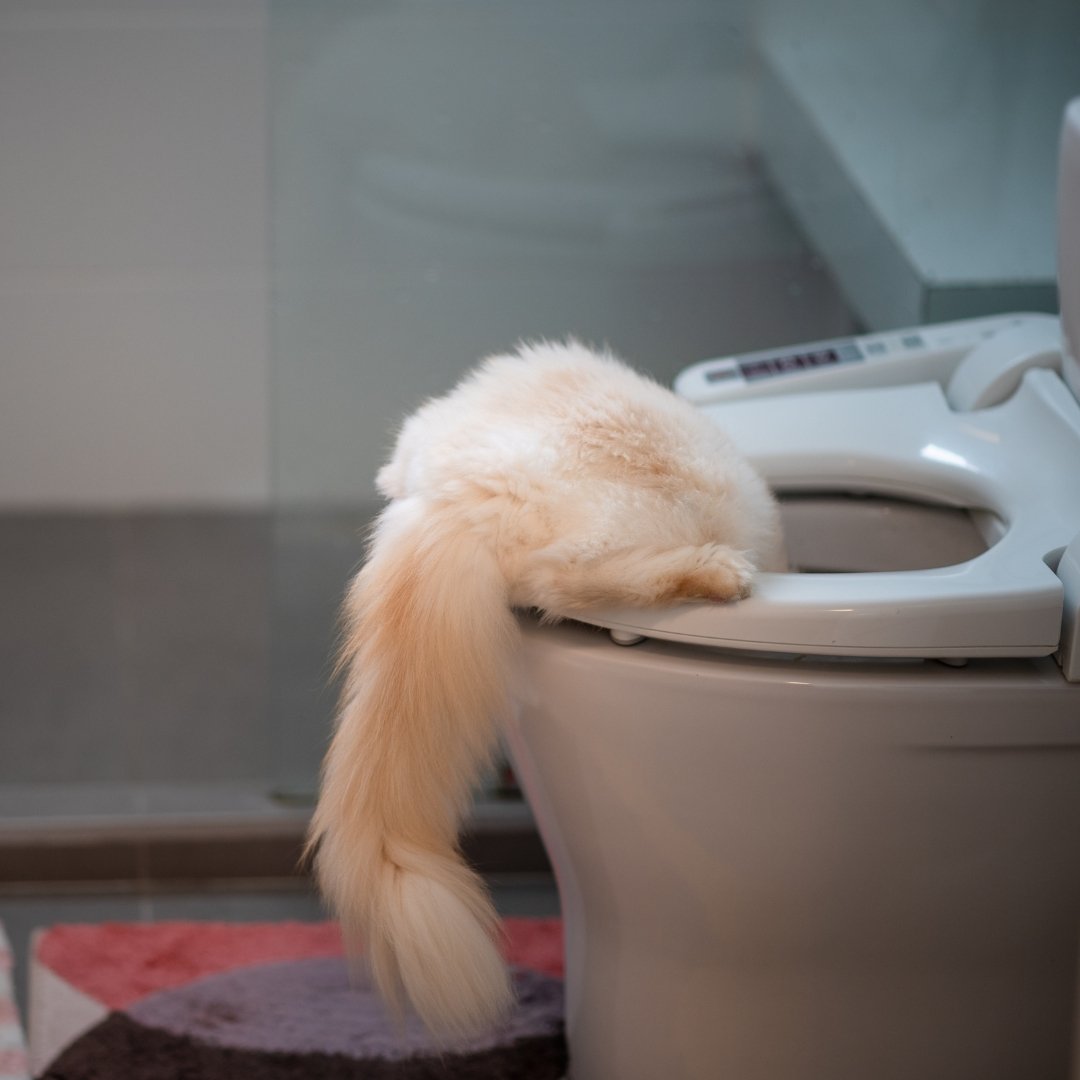Avoid Plumbing Problems: Don't Flush Cat Poop Down Your Toilet - Expert Advice
Avoid Plumbing Problems: Don't Flush Cat Poop Down Your Toilet - Expert Advice
Blog Article
We've come across this great article relating to How to Dispose of Cat Poop and Litter Without Plastic Bags directly below on the web and felt it made good sense to share it with you on this site.

Intro
As pet cat owners, it's important to bear in mind how we get rid of our feline close friends' waste. While it might appear practical to flush pet cat poop down the bathroom, this technique can have destructive consequences for both the setting and human wellness.
Alternatives to Flushing
Fortunately, there are more secure and more responsible means to throw away pet cat poop. Think about the complying with choices:
1. Scoop and Dispose in Trash
The most usual technique of dealing with pet cat poop is to scoop it right into a biodegradable bag and throw it in the trash. Make sure to utilize a specialized trash scoop and take care of the waste quickly.
2. Usage Biodegradable Litter
Choose naturally degradable pet cat clutter made from products such as corn or wheat. These litters are eco-friendly and can be securely disposed of in the garbage.
3. Bury in the Yard
If you have a backyard, take into consideration hiding cat waste in a designated area away from vegetable gardens and water resources. Make sure to dig deep enough to avoid contamination of groundwater.
4. Mount a Pet Waste Disposal System
Buy a family pet garbage disposal system particularly made for cat waste. These systems use enzymes to break down the waste, decreasing odor and ecological influence.
Health Risks
Along with ecological concerns, purging feline waste can likewise pose health threats to human beings. Cat feces may contain Toxoplasma gondii, a bloodsucker that can trigger toxoplasmosis-- a potentially serious illness, particularly for expectant women and individuals with weakened immune systems.
Ecological Impact
Flushing cat poop presents hazardous virus and bloodsuckers into the water system, posing a significant threat to water ecosystems. These impurities can adversely impact marine life and concession water quality.
Conclusion
Accountable family pet ownership expands past giving food and sanctuary-- it also involves appropriate waste monitoring. By avoiding flushing pet cat poop down the commode and selecting alternate disposal techniques, we can decrease our ecological impact and safeguard human wellness.
Why Can’t I Flush Cat Poop?
It Spreads a Parasite
Cats are frequently infected with a parasite called toxoplasma gondii. The parasite causes an infection called toxoplasmosis. It is usually harmless to cats. The parasite only uses cat poop as a host for its eggs. Otherwise, the cat’s immune system usually keeps the infection at low enough levels to maintain its own health. But it does not stop the develop of eggs. These eggs are tiny and surprisingly tough. They may survive for a year before they begin to grow. But that’s the problem.
Our wastewater system is not designed to deal with toxoplasmosis eggs. Instead, most eggs will flush from your toilet into sewers and wastewater management plants. After the sewage is treated for many other harmful things in it, it is typically released into local rivers, lakes, or oceans. Here, the toxoplasmosis eggs can find new hosts, including starfish, crabs, otters, and many other wildlife. For many, this is a significant risk to their health. Toxoplasmosis can also end up infecting water sources that are important for agriculture, which means our deer, pigs, and sheep can get infected too.
Is There Risk to Humans?
There can be a risk to human life from flushing cat poop down the toilet. If you do so, the parasites from your cat’s poop can end up in shellfish, game animals, or livestock. If this meat is then served raw or undercooked, the people who eat it can get sick.
In fact, according to the CDC, 40 million people in the United States are infected with toxoplasma gondii. They get it from exposure to infected seafood, or from some kind of cat poop contamination, like drinking from a stream that is contaminated or touching anything that has come into contact with cat poop. That includes just cleaning a cat litter box.
Most people who get infected with these parasites will not develop any symptoms. However, for pregnant women or for those with compromised immune systems, the parasite can cause severe health problems.
How to Handle Cat Poop
The best way to handle cat poop is actually to clean the box more often. The eggs that the parasite sheds will not become active until one to five days after the cat poops. That means that if you clean daily, you’re much less likely to come into direct contact with infectious eggs.
That said, always dispose of cat poop in the garbage and not down the toilet. Wash your hands before and after you clean the litter box, and bring the bag of poop right outside to your garbage bins.
https://trenchlesssolutionsusa.com/why-cant-i-flush-cat-poop/

Do you like reading up on How to Dispose of Cat Poop and Litter Without Plastic Bags? Write a remark down below. We would be glad to hear your reactions about this review. We are looking forward that you visit us again in the future. Do you know somebody who is curious about the subject? Please feel free to promote it. I enjoy reading our article about Can You Flush Cat Poop Down The Toilet?.
Book An Estimate Now Report this page